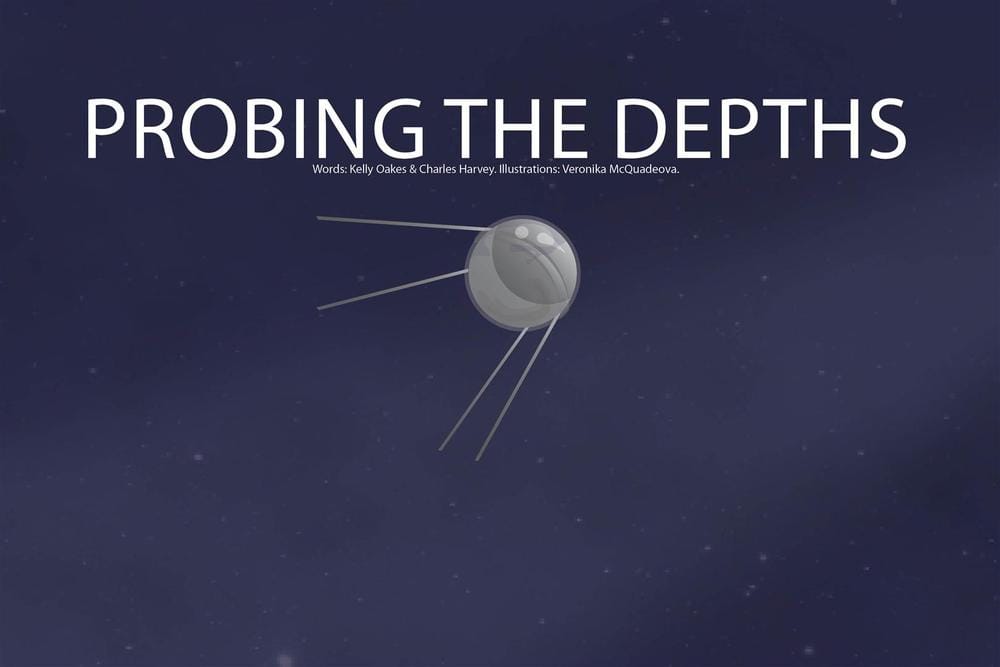Probing the depths
Ever since man has been able to think of clichés, he has dreamed of heading to the stars

Ever since man has been able to think of clichés, he has dreamed of heading to the stars. The staff and students at Imperial College London are no exception, and have been involved in numerous missions to explore our solar system. Here, we take a look at just some of the missions Imperial is involved with. From landing on a comet 750 million kilometers away and investigating the unique weather system on one of Saturn’s moons, to hunting for the signs of life on other planets, and even why it might be better to keep our feet firmly on the ground while doing all of this.
Mars

In 2018, the ExoMars rover will land on the red planet. ExoMars will look underneath the surface of Mars in the hope of finding life – or evidence that life once existed there. One of the problems with looking for life on Mars is that any organic matter on the surface will not last for long. Thanks to plentiful amounts of carbon dioxide and water in the Martian atmosphere, any matter present would quickly oxidise. With the help of a drill that can dig up to two meters down, ExoMars will look for organic matter that has been preserved underneath the oxidising surface.
Scientists at Imperial are working on an instrument for ExoMars called the Lifemarker chip. It works in a similar way to a pregnancy test, using antibodies to identify particular molecules. But even if life is not detected, all is not lost. Another possibility, and one that Professor Mark Sephton, from the Earth Sciences and Engineering Department at Imperial, thinks is likely, is that ExoMars will detect the signature of ancient life. 3.8 billion years ago, Mars was much wetter and warmer than it is now, and not too dissimilar to the Earth at that time. Life arose on Earth, so why not on Mars too? If life did exist, ExoMars hopes to find its signature preserved in the rocks.
One reason to suspect life on Mars, or conditions conducive to life, is the amount of methane in the Martian atmosphere. There are only a few ways for the methane to have got there, and most have already been ruled out. The remaining possibilities are that either life is creating methane, or that water underneath the surface is reacting with basaltic rock and creating it. Sephton seems confident that, either way, ExoMars will find something interesting: “If we discover biology, great. But even if we just find reactions going on underneath the surface, that means there’s water there and that creates opportunities for life.”
Earth

Space research at Imperial is not focused solely on those distant heavenly wanderers. One important mission that Imperial is involved with, Cluster, is studying the magnetic environment of Earth. It is well named, this mission, as it involves the use of four spacecraft, orbiting the planet in a pyramid formation. With such an arrangement, a 3D view of the planets magnetosphere can be created. What have we learnt from Cluster? As Chris Carr, senior research lecturer says, “everything’s a lot more complicated that we thought!”. Operating four spacecraft, calibrating and processing the data and keeping them flying for over a decade is apparently hard work. To further complicate matters, two new instruments have been added to the configuration in the form of the Double Star Mission. The instruments are identical in everything but their orbit, and will provide much needed context to the Cluster Mission. Double Star is a collaboration with researchers from China, and the first time China has launched a satellite for purely scientific reasons. All data from the Cluster missions are now open to the world scientific community, a requisite for being publicly funded.
The best value for money in space research is that done remotely from the ground. There’s nothing an astronaut can do that you couldn’t do from the ground by remote control Christoper Carr, Senior Research Lecturer
On the issue of finances – NASA has had to abandon any plans for future missions to the moon, thanks mainly to a massive US deficit. In a climate of austerity, with scientific funding frozen, we asked Chris Carr whether unmanned space research was the future. “Indeed”, he says, “We shouldn’t be aiming to put humans into space. It’s a nasty place – there’s radiation, a vacuum, and no one can hear you scream. In my opinion, 99% of the effort and money is spent on keeping the humans alive and bringing them back safely. Only 1% is spent on the actual experiments. The best value for money in space research is that done remotely from the ground. There’s nothing an astronaut can do that you couldn’t do from the ground by remote control.” While getting humans back to the moon may be a cause for celebration for all humanity, its focus is exploration of the unknown, and not on science.
Churyumov-Gerasimenko Comet

Launched in 2004, the Rosetta spacecraft is on a 10 year mission to the comet 67P/Churyumov-Gerasimenko. As well as observing it in visible, microwave and infra red light, and studying its composition via spectrometry, the Rosetta mission will study the comet’s magnetosphere – a task controlled and coordinated by a team from Imperial. When a comet travels towards the sun, the heat vaporises the water, carbon dioxide and tarry materials that make up the body of the comet. The intense solar radiation, at the same time, ionises this gas creating a plasma. Rosetta will position itself within this plasma, and will study the magnetic environment of the comet. Chris Carr, Head of Imperial’s Space Magnetometer Laboratory, explains why such information is useful. “The raw material of the solar system is in a comet”, says Carr, “This stuff has been preserved out in the far reaches of the solar system for 4.5 billion years, without being modified, so it would be great to see some of this material close up”. Previously, the spacecraft Giotto, in 1986, flew by Haley’s comet. Since it was only a flyby, it could only get a snapshot of the environment of the comet. Rosetta will be the first satellite to go in orbit around a comet. Once there it will also release a lander, to study up close and personal the chemical and magnetic structure of the comet. This kind of mission has never been attempted before; it is an exploratory mission. The team of Imperial scientists hope that the study of the interaction between the sun and the comet will lead to greater understandings of the plasma environment around our own planet.
Saturn

One of the big mysteries remaining in our solar system concerns atmosphere on Saturn. Models that predict the temperature of Saturn’s upper atmosphere, based on the sunlight that reaches it, give a temperature that is around 200°C below what is observed. Dr Ingo Mueller-Wodarg, a physicist at Imperial, admits that this should be a “rather basic” problem to solve, but that nothing has yet been identified that can explain these high temperatures on any gas giant. But he thinks that he and his colleagues may have a solution.
Saturn, like Earth, has its own magnetic field. This magnetic field causes currents to flow in the atmosphere, heating it up. However, these currents flow at the planet’s poles, but the unexplained high temperatures are seen near the equator. Moving energy towards the equator on a fast spinning planet like Saturn is tricky thanks to the Coriolis force. Mueller-Wodard and colleagues have now been able to simulate the high temperatures observed by including forces between charged and neutral particles in their model. This additional drag allows the heat from the poles to eventually spread out over the whole planet, giving the atmosphere a temperature boost.
Titan

The model, which aimed to predict the behaviour of the winds in Titan’s atmosphere as well as the temperatures, was developed ten years ago, in part by Dr Ingo Mueller-Wodarg, a physicist from Imperial. It made predictions based purely on solar heating of Titan’s upper atmosphere, but did not predict the changes in temperature and atmospheric density that Cassini has since observed in the moon’s atmosphere. Cassini’s orbit is designed so that the spacecraft flies through the atmosphere of Titan periodically. Each time it does this, it measures a different atmospheric density. Mueller-Wodarg says the variability in Cassini’s measurements is still a “major mystery”. His current work investigates a possible cause.
Imperial physicists are also contributing towards an understanding of Titan’s unique chemistry. Titan is the only body in the solar system, apart from Earth, that has a weather system – but its lakes are filled with methane and ethane, rather than water. However, we can’t see any of this from the outside; the moon is enveloped in a yellow haze, made up of methane and large hydrocarbon molecules. While Cassini measurements are important for looking at the upper atmosphere of Titan, the Huygens probe was needed to take a closer look near the surface. In 2005, Huygens drifted down through Titan’s atmosphere, taking measurements on its way to the surface. It found lots of heavy molecules. Mueller-Wodarg and colleagues believe that extreme ultraviolet sunlight absorbed in Titan’s upper atmosphere creates lots of free radicals that then combine to create the huge hydrocarbon molecules that are seen. These molecules then sink down to the surface and contribute to the weather cycle.








